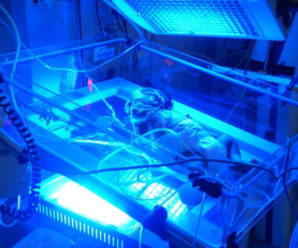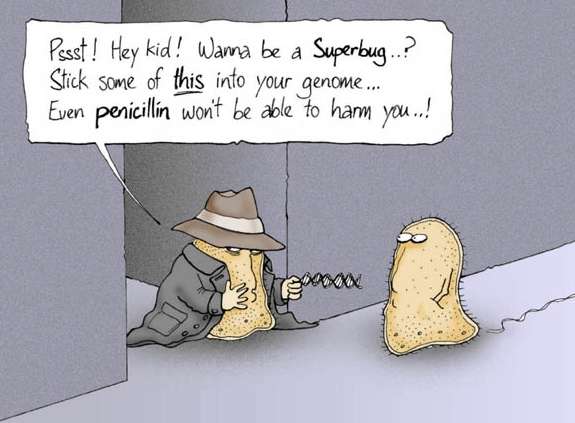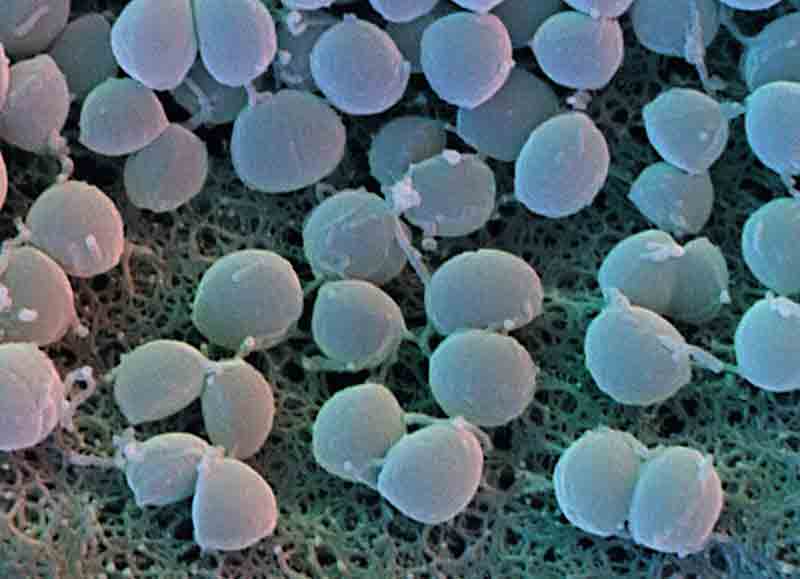Microbiology of Rabies Virus
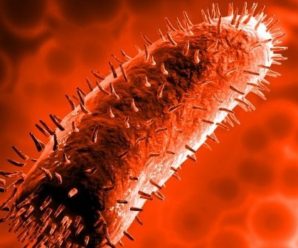
- Belongs to genera “lyssavirus” of family “rhabdoviridae”
- Bullet shaped
- Nucleocapsid shows helical symmetry
- ssRNA (single stranded RNA) virus
- Outer lipoprotein envelope contains protruding hemagglutinating peplomer spikes
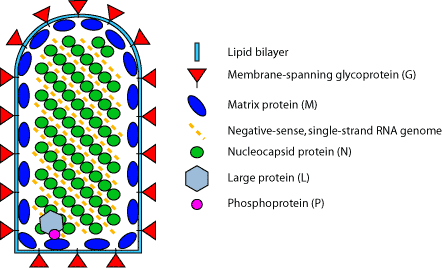
Street and Fixed virus Comparison:
| Basis of difference | Street virus | Fixed virus |
| Definition | Freshly isolated viruses from natural human or animal infection that has not undergone any modification in the laboratory | Strains adapted to laboratory animals by several serial intracerebral passages in rabbits |
| Neurotropism | No | Yes |
| Incubation period | Long (21-60 days in dogs) | Shortened (4-6 days) |
| Negri bodies | Present | Usually absent |
Epidemiology:
- Sylvatic rabies: occur in wild animals like skunks, jackals, raccoons, foxes, wolves, mongoose, bats, etc.
- Urban rabies: transmitted by domestic animals like dogs, cats, horses, cattle
- Modes of transmission: Animal bite, scratch, inhalation of contaminated aerosols and transplantation of infected corneas (rare)
| Continents | Animals involved |
| Asia | Dog |
| Middle east | Wolf, dog |
| Africa | Dog, mongoose, antelope |
| Europe | Fox, Bats |
| North America | Fox, skunk, raccoon, insectivorous and herbivorous bats |
| South America | Dog, vampire bats |
Pathogenesis: 1. Inoculation of virus 2. Multiplication in muscle or connective tissue locally (at the site of inoculation) 3. Invasion of peripheral nerve fibers at the neuromuscular junction (NMJ) 4. Entry into the peripheral nerves through NMJ 5. Ascend to CNS (spinal cord and brain) via retrograde transport 6. Multiplication in the grey matter of brain 7. Propagation via afferent neurons to peripheral tissues including salivary gland from which the virus is excreted 8. Incubation period depends on the portal of entry, dose of inoculum and severity of the wound
Clinical features:
- Prodormal period (1-10 days): Headache, malaise, fever, anxiety, anorexia, sore throat and myalgia
- Clinical disease: Hydrophobia, spasms, hyperexcitability
- With disease progression: seizures, disorientation, delirium, flaccid paralysis, death due to involvement of nervous, pulmonary and cardiac systems.
Laboratory Diagnosis:
A video of Laboratory Diagnosis of Rabies Virus
Diagnosis in man:
- Rapid immunofluorescence tests to detect virus, viral nucleic acids and viral products in samples of sliva, corneal impression and smears of skin biopsies
- Test for detection of antibodies to the virus in the serum of unvaccinated individual
- Demonstration of negri bodies in brain
- Isolation of virus by mouse inoculation with brain, CSF, saliva and urine
Diagnosis in animal:
- A part of brain of the rabid animal is preserved in 50% glycerol for isolation of virus
- Remaining part is preserved in Zenker’s fixative for demonstration of negri bodies using Seller’s technique.
Immunization: A. Human Rabies Immunoglobulin serum (HRIG) B. Vaccine: Due to high risk of neuroparalytic accidents with neural vaccines, non-neural vaccines are being increasingly used these days. Neural vaccines:
- Semple vaccine
- BPL (Betapropriolactone) vaccine
- Infant brain vaccine
Non-neural vaccines:
- Inactivated: Duck egg vaccine and HDCV
- Live attenuated: Chick embryo vaccine (LEP of 40-50 and HEP of 180)
Subunit vaccine: Recently developed recombinant vaccine is in experimental stage Prophylaxis in Nepal
- If a person has completed a pre-exposure rabies series and is exposed to a possibly rabid animal then, 2 shots as a booster, 3 days apart
- If a person has not had pre-exposure rabies injections and is exposed to a possibly rabid animal then human Rabies Immune Globulin (HRIG) injected around the wound; 5 injections of rabies vaccine on days 0, 3, 7, 14, and 28


